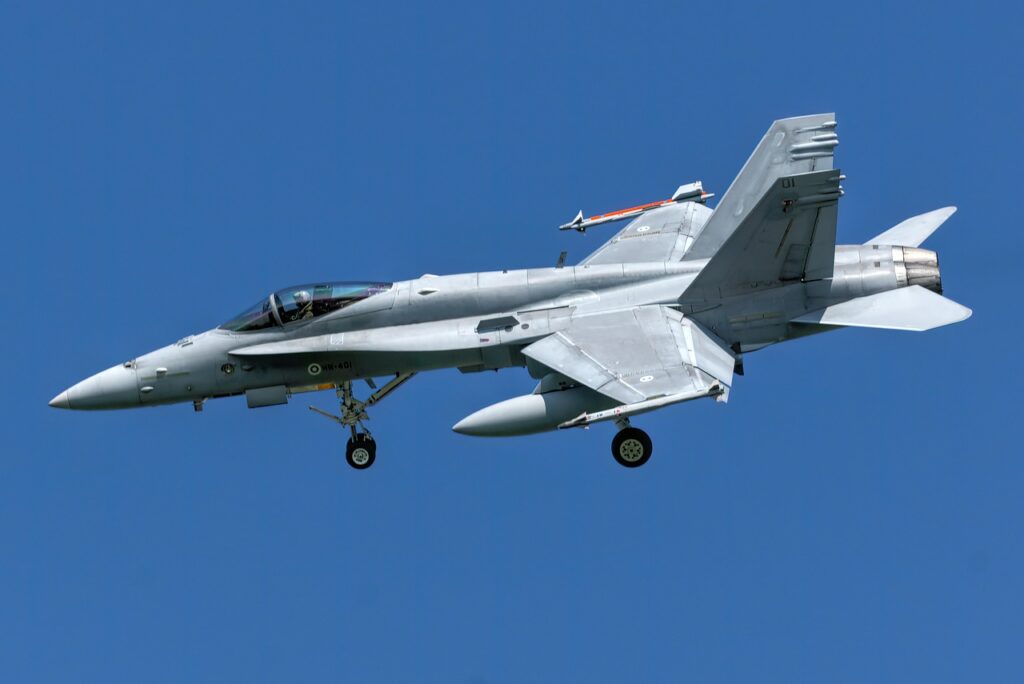A US Navy F/A-18 Hornet jet was lost at sea after the aircraft carrier USS Harry S. Truman performed a sudden maneuver to avoid a missile attack by the Houthi militia. The abrupt turn resulted in both the jet and a towing vehicle, which was being moved into a hangar, sliding off the carrier’s deck into the ocean. The incident occurred in the Red Sea, an area of active conflict, and both the jet and the towing vehicle were lost beyond recovery.
Jet and Equipment Lost Due to Unpredictable Maneuver
Sources close to the incident, speaking to CNN, reported that the sharp maneuver was taken to avoid a missile launched by the Houthi militia. As a result of the unexpected movement, both the jet and the towing vehicle fell off the deck and plunged into the sea. Fortunately, crew members were able to evacuate safely before the equipment went overboard.
Despite efforts to recover the jet and vehicle, both were lost beyond reach, and no attempt to retrieve them has been successful. The F/A-18, a modern fighter jet, was valued at around $70 million, representing a significant loss for the Navy. The Navy has not yet released the results of its investigation into the incident, which is ongoing.
Investigation Underway as Navy Continues Operations
An investigation into the cause of the incident is currently underway, but results have not been disclosed. Military vessels operating in active conflict zones, like the Red Sea, often make unpredictable maneuvers to reduce the risk of missile strikes. This practice, which is common in high-risk environments, is believed to be consistent with the reported cause of the incident.
The Navy’s ability to perform operations in hostile waters has been a topic of concern in recent months, particularly in areas such as the Red Sea where threats from groups like the Houthis are prevalent. The incident has led to heightened attention regarding the safety and security measures aboard the USS Harry S. Truman and similar naval vessels.
USS Harry S. Truman Faces Repeated Troubles
This incident is not the first time the USS Harry S. Truman has faced significant challenges in recent months. In February, the aircraft carrier was involved in a collision with a commercial vessel in the Mediterranean. The collision caused visible damage to the ship’s storage areas and rear deck. After the accident, the carrier was forced to dock in Greece for emergency repairs before continuing its operations.
Additionally, the Harry S. Truman has been actively engaged in air operations targeting Houthi positions in Yemen. However, operational challenges have continued to surface, with concerns over the safety of personnel and equipment aboard the vessel.
Rising Tensions and the Impact on Navy Operations
The loss of the F/A-18 jet further exacerbates concerns over the safety of US Navy operations in increasingly hostile waters. Tensions in regions like the Red Sea, where US Navy vessels are often deployed, have been escalating due to missile threats from militias and other adversaries. The Navy has faced ongoing challenges in ensuring the safety of its assets, personnel, and equipment while operating in such volatile environments.
The incident also highlights the unpredictability of military operations in conflict zones, where quick decisions and maneuvers can have unintended consequences. As the investigation into the Harry S. Truman continues, the US Navy is expected to review its operational procedures and safety protocols to prevent similar accidents in the future.
In response to the recent events, the US Navy is likely to increase its focus on safety protocols and operational readiness. The Harry S. Truman, which has faced several operational setbacks this year, is expected to undergo further scrutiny to ensure that its missions can be carried out effectively without risking the lives of crew members or the loss of valuable assets.
The military will continue to assess its tactics and equipment to ensure that operations in hostile environments remain as safe as possible. With rising tensions and ongoing conflicts in the Middle East, US Navy operations are likely to face even greater challenges moving forward.
